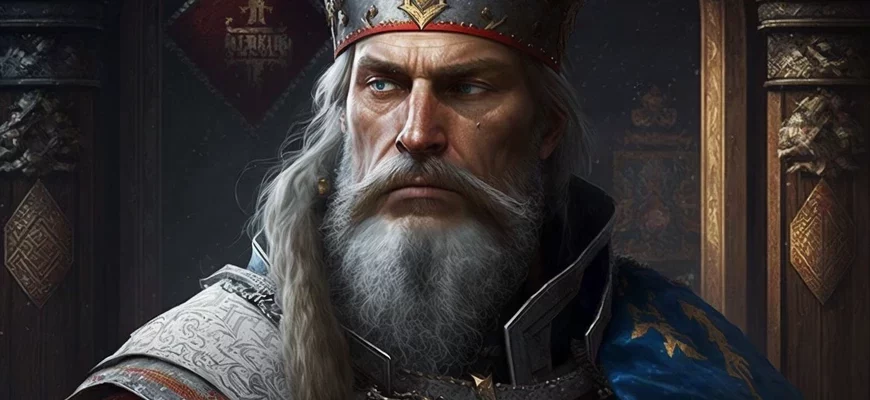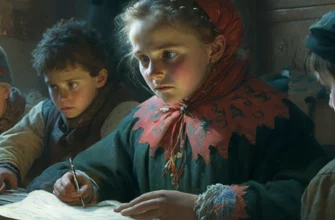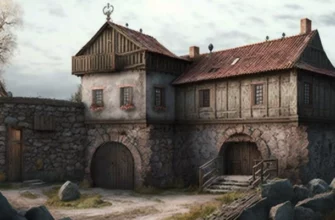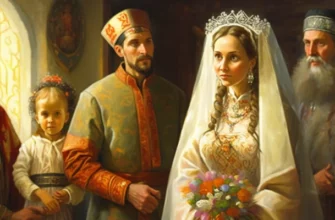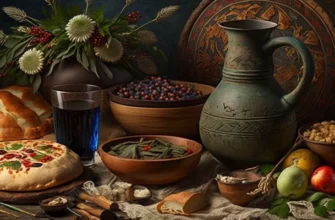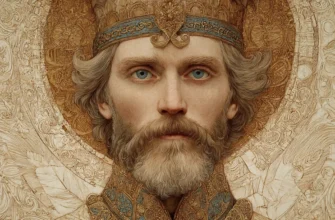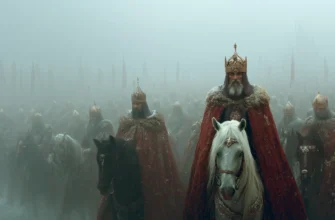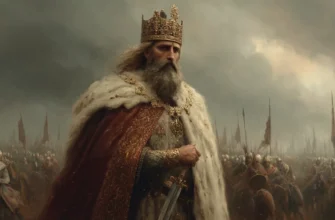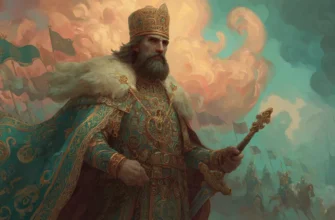Ancient Rus was a state that existed from the 9th to the 14th centuries and was located on the territory of modern Russia, Ukraine, and Belarus. The system of government of this state was quite complex and diverse, since, depending on the historical period and the territory that was subordinate to the principality, the government had its own characteristics. In this article, we will look at the power structures, legal system, role of the people, and religious influence on the governance of the state.
- Power structures of Ancient Rus
- The principality as the main unit of power
- The boyars and their role in power
- Legal system
- Legal norms and customs
- Supreme power and the judicial system
- The role of the people in government
- People’s assemblies and their influence on governance
- Religious influence
- The role of the church in power
- Relations between princes and the church
- Conclusion
Power structures of Ancient Rus
The principality was the main unit of power in Ancient Rus. Princes ruled the lands and had the right to collect taxes. In some cases, if a prince was very powerful, he could proclaim himself a grand prince and gain even greater powers. However, the principality was not an absolute monarchy, as power was limited by various institutions and groups.
The boyars were high-ranking members of the nobility who had significant power in the principalities. They formed the prince’s council, which had the right to veto the prince’s decisions and control the actions of the prince’s envoys.
The principality as the main unit of power
The principality was the main unit of power in ancient Rus, with the prince as the chief ruler. The prince controlled the territories that were part of the principality, collected taxes, and administered justice. In addition, the principality was involved in foreign policy and inter-state relations. The principalities had developed trade and craft centers that ensured the economic well-being of the principality. The principality was an important component of Old Rus’ statehood and played an important role in shaping its historical path.
The boyars and their role in power
The boyars were one of the groups in power in ancient Rus’ and played an important role in the power structure. The boyars were the most influential and wealthy people in the state and held key positions in administrative and military structures. They were involved in the management of the state and the making of important decisions. In addition, the boyars had a significant influence on the princes and could be used to defend their interests. At certain periods in the history of ancient Rus, the boyars could act as an opposition force to the princes and fight for power. However, in general, the boyars were an important component of the power system of ancient Rus and influenced the formation of state institutions.
Legal system
The legal system of ancient Rus was based on customary law and religious norms. The main source of law was the “Rus’ Laws,” which consisted of customary norms and prescriptions that regulated various social relations. Also important were the norms of canon law, which defined rules of conduct and moral standards. Crimes and violations of the law were punished in accordance with accepted norms, and the judicial system performed the functions of justice.
One of the most important components of the legal system of ancient Rus was “Drevlyan law,” which defined rules of conduct and property. It was contained in the form of records on wooden boards, which gave it its name. The law was binding in all territories of ancient Rus and was linked to customary law and religious norms.
Overall, the legal system of ancient Rus was complex and diverse, reflecting the complexity of society at that time. It had a significant impact on the formation of the state and defined legal standards throughout the centuries.
Legal norms and customs
The legal norms and customs of ancient Rus were very diverse and reflected the complexity of social relations at that time. They included norms of behavior, property, inheritance, and other rules that regulated various spheres of life.
One of the main sources of law was the Rus’ Laws, which consisted of customary norms and regulations governing various social relations. The Rus’ Laws defined the rules for farming, the development of crafts, land use, and the procedure for concluding and terminating contracts.
In addition, the norms of canon law, which defined rules of conduct and moral standards, were important. In some cases, canon law was binding in all territories of ancient Rus.
Customs and traditions, which were formed as a result of a long period of coexistence in a certain territory, also had a significant impact on legal norms. For example, customary norms for resolving conflicts often provided for their resolution through a peace treaty.
In general, the legal norms and customs of ancient Rus were an important element in the formation of the legal system and ensured the functioning of the state and society. They influenced the further development of law in Ukraine and other countries belonging to the cultural space of Eastern Europe.
Supreme power and the judicial system
The supreme power of ancient Rus was complex and rather fragmented. The highest government positions were held by princes and rulers who headed their principalities and domains. However, princely power was limited by a large number of boyars who held important positions in the state.
In the first half of the 12th century, a centralized authority was established in Rus, which was recognized by the princes in the famous “Rus Word.” It was in the hands of the prince-grand prince, who had the right to conduct foreign policy, as well as power over certain regions.
The judicial system of ancient Rus was also quite complex and fragmented. Different principalities had different forms of courts, from local to central. Each principality had its own law and judicial system, which determined the order of court proceedings.
In most cases, court hearings were held with the participation of boyars and princes. Court decisions could be overturned or changed by higher authorities, reflecting the complexity and fragmentation of the judicial system.
In general, the supreme authority and judicial system of ancient Rus reflected the complexity and diversity of social relations at that time. They had a significant impact on the further development of law in Ukraine and other countries belonging to the cultural space of Eastern Europe.
The role of the people in government
The people played an important role in the government of ancient Rus, especially at the local self-government level. People’s assemblies (veche) were held in various cities and towns of Rus, where citizens gathered to discuss issues of common interest.
In most cases, people’s assemblies were held under the leadership of local princes and representatives of the boyars. However, an important element of popular self-government was the ability of the people to express their opinions and demand that princes and boyars ensure their rights.
In some cases, popular assemblies could make decisions that were binding on princes and other government officials. For example, popular assemblies had the right to determine taxes and other mandatory payments for community residents.
In general, the role of the people in the government of ancient Rus reflected a certain balance between the authorities and the people, which helped to ensure the stability and development of the state. This role of the people influenced the further development of democratic and social movements in Ukraine and other countries of Eastern Europe.
People’s assemblies and their influence on governance
The governance of ancient Rus was characterized by the significant influence of people’s assemblies (veche) on important decisions.
A veche was a gathering of the people that took place in cities and towns. Western scholarship considers the veche to be a universal form of popular self-government in the East.
The veche consisted of all men who had reached the age of 18 and had the right to vote. It had the right to elect and dismiss princes, determine military and foreign policy matters, set taxes, and control their enforcement.
The veche also made decisions on recognizing new princes or opposing old princes who violated laws and order.
The people’s assembly played an important role in shaping socio-political and legal norms in Rus. It was an important tool for the development of democratic processes and the strengthening of the rights of the people.
The people’s assembly, as well as the participation of citizens in deciding important issues, are parts of democratic culture that have come down to us from ancient Rus and help shape the modern understanding of democracy and civil society.
Religious influence
Religious influence was one of the key components of ancient Rus culture and affected various aspects of society.
At the beginning of the 9th century, Prince Oleg established ties with Byzantium and concluded a treaty of friendship and trade, which allowed Byzantine culture to develop in Rus. These ties led to the spread of Orthodox Christianity in Kievan Rus and established a close relationship between the church and the state.
In 988, Prince Vladimir was baptized, making Christianity the state religion. This changed the cultural and social landscape of Rus, increasing the influence of the church on society.
The church played an important role in shaping culture and moral and ethical norms, supported book culture, established schools, and was involved in social and charitable activities.
Rus had its own religious traditions, such as ancestor worship and various rituals, which were combined with Christian customs and rituals. This shows that religious influence did not replace local cultural traditions, but interacted with them.
All these aspects indicate that religious influence was an important component of Old Russian culture and influenced the formation of the identity of the people and their values.
The role of the church in power
In ancient Rus, the church had a significant influence on politics and power. First of all, it was independent of the state and had its own internal hierarchy. The highest spiritual leader was the metropolitan, who was appointed by the Patriarchate of Constantinople. In addition, each prince had the right to appoint his own bishop.
The church was also involved in the administration of the state, as it provided moral support to the authorities and assisted in the collection of taxes. Church officials were also involved in writing and performed judicial functions. Church courts settled disputes between people and also considered criminal cases.
However, the church did not have complete power over the people, as ancient Rus also had customs and legal norms that were recognized as generally accepted. Nevertheless, the church influenced the formation of the moral values and worldview of the people, which allowed it to influence state policy.
Relations between princes and the church
Relations between princes and the church in ancient Rus can be divided into several stages.
The first stage (9th-10th centuries) is characterized by the formation of Christianity as the state religion in Rus. During this period, the church was weak and dependent on the princes. The princes promoted the spread of Christianity in their principalities and financed the construction of churches and religious institutions. However, the princes also used the church for their own political purposes.
The second stage (11th-12th centuries) was marked by the strengthening of the church’s influence on the state and its participation in state administration. This was due to changes in the socio-political conditions in Rus. The expansion of the princely states and the formation of a centralized state forced the princes to seek support from the church. The princes began to pay more attention to religious issues and participated in church assemblies. In turn, the church began to provide ideological support to the principality and actively interfere in the political life of the state.
The third stage (13th-15th centuries) is characterized by the strengthening of church power and its separation from the state. At this stage, the church became more independent and exerted significant influence on the state and society. During this period, new church hierarchies were created, such as metropolitans and patriarchs. The church performed not only religious but also public functions, such as education, culture, and medicine. From that time on, the church became independent of the princes and exercised its power on the basis of canons and rules.
However, despite the strengthening of the church’s influence on the state, relations between the princes and the church remained complex. The princes continued to use the church for their political purposes, while the church defended its rights and interests.
In general, relations between princes and the church in ancient Rus can be described as complex and interdependent. Princes provided support to the church, and the church provided ideological support to the principality and played an important role in the development of culture and education. However, the mutual relations between them changed depending on the socio-political situation in the state and the development of the church itself.
Conclusion
The system of government in ancient Rus was quite complex and multi-layered. Princes exercised their power within their principalities, but at the same time were subordinate to the Grand Prince. The Grand Prince was the chief administrative body and exercised state power.
In addition, there were various forms of self-government in the principalities, such as druzhina and veche, which had their own functions of authority. Depending on the socio-political situation in the state, the role of princes and the Grand Prince in the system of government could vary.
Cultural and religious factors, such as the Orthodox Church and a complex system of social classes, also had a great influence on the system of government in ancient Rus, playing an important role in the formation of the hierarchy of power.
Thus, the system of government in ancient Rus can be described as multi-layered and complex.
